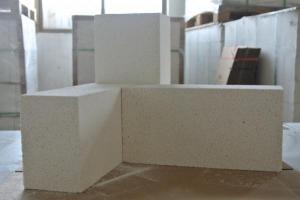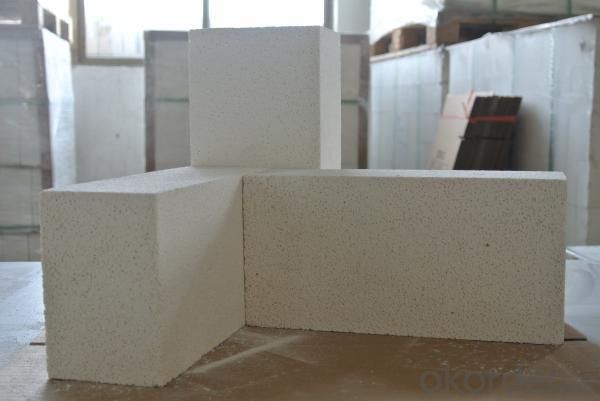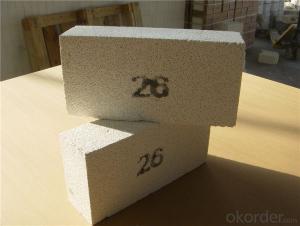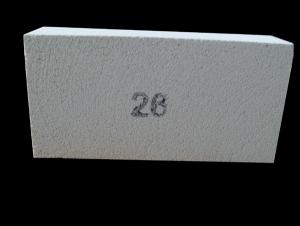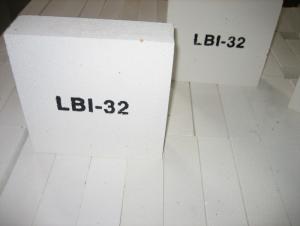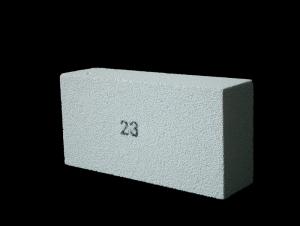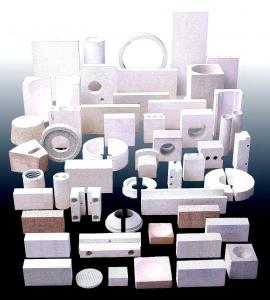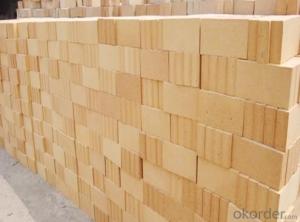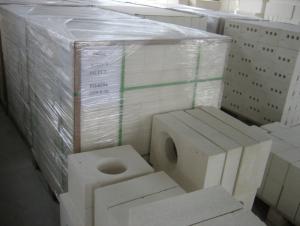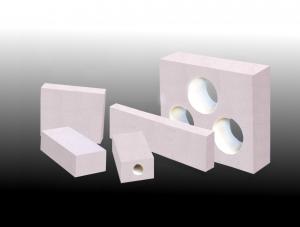GJM30 Insulating Fire Brick
- Loading Port:
- China Main Port
- Payment Terms:
- TT or L/C
- Min Order Qty:
- 1000 pcs pc
- Supply Capability:
- 1000 Tons Per Month pc/month
OKorder Service Pledge
OKorder Financial Service
You Might Also Like
General Information of Insulating Fire Brick GJM30
Insulating fire brick GJM30 are produced by mixing, casting or extruding, drying, sintering and grinding. Our insulating fire bricks GJM30 temperature is 1650℃(3000℉). We could supply a wide range of shapes.
To make our firebricks more energy and cost effective, we have different manufacturing methods for our insulating fire bricks casting and extruding method.
For insulating fire bricks GJM30,we choose the extruding method. Extruding insulating fire bricks have better strength and offering great performance in load bearing applications and in conditions where abrasion from mechanical abuse or flow of hot gases.
Characteristics of Insulating Fire Brick GJM30
Our insulating bricks GJM30 exhibit the following characteristics:
High refractoriness temperature
Strong resistance to slag
Good high temperature properties
Typical Application of Insulating Fire Brick GJM30
Typical applications of magnesia bricks include ferroalloy furnace, metal mixer, Non-metallurgy industry furnace, high temperature kiln, calcined lime furnace, regenerator in glass furnace.
Technical Data of Insulating Fire Bricks GJM30
|
| GJM30 |
Physical Properties: |
|
|
Classifiction Temperature | ℃ | 1600.0 |
Density | Kg/m3 | 1000.0 |
Cold Crushing Strength | Mpa | 2.8 |
Reheating Linear Change(24hrs) |
|
|
1600℃ | % | 0.7 |
Hot Load Strength Deform(90 minutes) |
|
|
1370℃ at 0.069 Mpa(10psi) | % | 0.2 |
Thermal Conductivity |
|
|
400℃ | W/m.k | 0.3 |
600℃ | W/m.k | 0.3 |
800℃ | W/m.k | 0.4 |
1000℃ | W/m.k | 0.4 |
1200℃ | W/m.k | 0.4 |
Specific Heat | KJ/Kg.K | 1.1 |
Chemical Analysis: |
|
|
Al2O3 | % | 70.0 |
SiO2 | % | 28.3 |
Fe2O3 | % | 0.5 |
TiO2 | % | 0.1 |
CaO | % | 0.1 |
MgO | % | 0.1 |
Na2O+K2O | % | 0.7 |
CNBM has success in insulating fire bricks due to their cost-effectiveness, excellent insulation performance and high temperature properties. CNBM also has experience in magnesia brick application and would like to assist you in product selection, system design, and installation techniques.
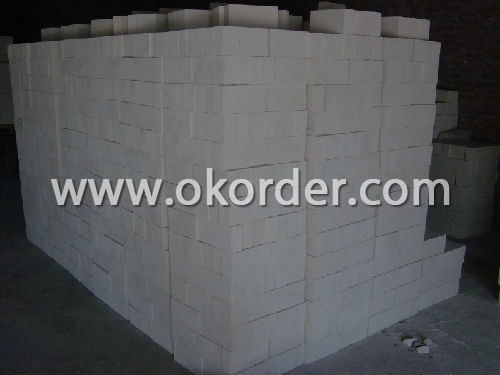
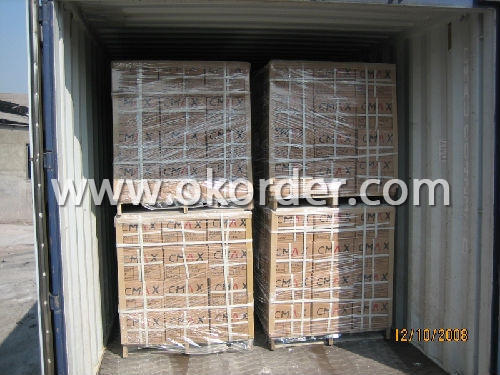
- Q: Can insulating fire bricks be used for insulation in walls or roofs?
- Insulating fire bricks are primarily designed for use in high-temperature applications, such as furnaces, kilns, and fireplaces. While they offer excellent thermal insulation properties, they may not be the best choice for insulation in walls or roofs of residential or commercial buildings. Insulating fire bricks are often made from lightweight refractory materials, such as ceramic fibers or expanded clay. These materials are highly resistant to heat, but they may not provide sufficient insulation against cold temperatures or moisture. Additionally, their structural integrity may not be suitable for load-bearing applications or other requirements specific to walls or roofs. For insulation in walls or roofs, it is generally recommended to use materials specifically designed for building insulation purposes, such as fiberglass batts, spray foam insulation, or rigid foam boards. These materials are better suited to provide both thermal and moisture resistance, as well as meet the necessary structural requirements. In summary, while insulating fire bricks may offer excellent thermal insulation properties, they are not typically recommended for use in walls or roofs. It is advisable to consult with a building professional or insulation specialist to determine the most suitable insulation materials for your specific needs.
- Q: Can insulating fire bricks be used in rocket stove designs?
- Yes, insulating fire bricks can be used in rocket stove designs. Insulating fire bricks are specifically designed to withstand high temperatures and provide excellent insulation, making them ideal for rocket stoves which require efficient heat retention. Their lightweight and high insulating properties help to maximize heat transfer and improve the overall performance of the rocket stove.
- Q: Can insulating fire bricks be used in heat treatment furnaces?
- Indeed, heat treatment furnaces can make use of insulating fire bricks. These bricks are specifically engineered to possess a low thermal conductivity, enabling them to endure elevated temperatures while minimizing the dissipation of heat. This quality renders them ideal for deployment in heat treatment furnaces, where the preservation of a stable temperature is vital for the triumphant execution of the heat treatment procedure. Moreover, insulating fire bricks exhibit exceptional insulating attributes, thereby curtailing energy usage and enhancing the overall efficiency of the heat treatment furnace. Consequently, the utilization of insulating fire bricks in heat treatment furnaces is a prevalent practice across diverse industries.
- Q: Do insulating fire bricks have a high electrical resistivity?
- Yes, insulating fire bricks generally have a high electrical resistivity. This is because these bricks are specifically designed to have low thermal conductivity and high thermal resistance, which also translates into high electrical resistivity. The insulating materials used in these bricks, such as alumina, silica, and other refractory materials, have inherently high electrical resistivity. Additionally, the manufacturing processes often involve the addition of insulating additives, further enhancing the electrical resistivity of the fire bricks. As a result, insulating fire bricks are effective in reducing heat transfer and maintaining high temperatures in various industrial applications, such as kilns, furnaces, and thermal insulation systems.
- Q: What is the typical flexural strength of an insulating fire brick?
- The flexural strength of insulating fire bricks can vary based on the specific composition and manufacturing process. On average, these bricks have a flexural strength ranging from 2 to 10 MPa. It should be noted that individual bricks may have slightly different flexural strengths. Insulating fire bricks are utilized for thermal insulation in high-temperature situations such as furnaces, kilns, and fireplaces. Their low thermal conductivity allows them to effectively retain heat, which is crucial in environments where temperature control is important. Flexural strength refers to a material's ability to resist deformation or breakage when subjected to bending or flexing forces. The higher the flexural strength, the more resistant the material is to bending or flexing. Typically, insulating fire bricks are made from a combination of lightweight aggregates, high-temperature binders, and other additives. This composition gives them their low thermal conductivity and insulating properties, but it also impacts their mechanical strength, including the flexural strength. It's important to note that while insulating fire bricks have relatively low flexural strength compared to other refractory materials, they are not typically exposed to significant bending or flexing forces in their intended applications. Instead, their primary purpose is to provide thermal insulation, endure high temperatures, and resist thermal shock. To summarize, the flexural strength of insulating fire bricks typically ranges from 2 to 10 MPa, but this can vary based on the specific composition and manufacturing process. These bricks are primarily designed for thermal insulation rather than high mechanical strength, and their low thermal conductivity makes them suitable for a variety of high-temperature applications.
- Q: Can insulating fire bricks be used in the construction of heat shields?
- Yes, insulating fire bricks can be used in the construction of heat shields. Insulating fire bricks are designed to withstand high temperatures and have excellent thermal insulation properties. They can effectively absorb and distribute heat, making them ideal for creating heat shields that protect against excessive heat and prevent thermal damage. Insulating fire bricks are commonly used in various industries, such as steel, glass, and ceramics, where high temperatures are involved. They are also lightweight and easy to handle, making them a practical choice for constructing heat shields that need to be portable or easily installed. Overall, insulating fire bricks are a suitable and reliable material for constructing heat shields in various applications.
- Q: Can insulating fire bricks be used in the construction of boilers?
- Yes, insulating fire bricks can be used in the construction of boilers. Insulating fire bricks are made from lightweight materials that have high thermal insulation properties, making them suitable for use in high-temperature applications such as boilers. These bricks help to reduce heat loss and improve energy efficiency by preventing the escape of heat from the boiler. Additionally, they have excellent resistance to thermal shock and can withstand extreme temperatures, making them a reliable choice for boiler construction.
- Q: Can insulating fire bricks be used for insulation in autoclaves?
- Insulating fire bricks have the capability to be utilized for insulation within autoclaves. These bricks are specifically engineered to possess a minimal thermal conductivity, enabling them to proficiently retain heat and endure elevated temperatures. The insulation of autoclaves necessitates the ability to sustain a steady temperature and pressure, and insulating fire bricks excel in delivering exceptional insulation properties amidst these challenging circumstances. Furthermore, their robustness and durability render them well-suited for enduring the rigorous heat and pressure fluctuations commonly encountered in autoclaves. All in all, insulating fire bricks emerge as a dependable and efficient option for insulating autoclaves.
- Q: How durable are insulating fire bricks?
- Insulating fire bricks are known for their exceptional durability and longevity. These bricks are made from high-quality refractory materials, such as alumina and silica, which possess excellent thermal resistance and mechanical strength. As a result, insulating fire bricks can withstand extreme temperatures ranging from 1300°C to 1800°C (2372°F to 3272°F) without losing their structural integrity. The durability of insulating fire bricks can be attributed to several key factors. Firstly, their low thermal conductivity allows them to effectively insulate heat and prevent thermal shock, which is crucial for ensuring their long-term durability. Additionally, the high melting point of the refractory materials used in their production contributes to their ability to withstand intense heat. Moreover, insulating fire bricks are resistant to chemical erosion and corrosion, making them suitable for various industrial applications. They can withstand exposure to harsh chemicals, acids, and alkalis, ensuring their durability even in demanding environments. Furthermore, insulating fire bricks have a low density, making them lightweight and less susceptible to cracking or breaking under pressure. This characteristic enhances their durability and ease of handling during installation or maintenance. Overall, insulating fire bricks are highly durable and can withstand extreme temperatures, thermal shock, chemical erosion, and mechanical stress. Their exceptional durability makes them a preferred choice for applications such as furnaces, kilns, ovens, and other high-temperature environments where thermal insulation and long-lasting performance are essential.
- Q: Can insulating fire bricks be used in the construction of boilers for steam generation?
- Indeed, insulating fire bricks possess the capability to be employed in the manufacturing process of steam-generating boilers. These bricks are purposefully engineered to possess a meager thermal conductivity, thereby mitigating heat dissipation and enhancing the boiler's overall energy efficiency. In practice, they are frequently utilized in the construction of boiler partitions, bases, and furnace linings, given their ability to endure extreme temperatures and bestow remarkable insulation attributes. The integration of insulating fire bricks in boiler construction ensures that the heat generated from fuel combustion is efficiently contained and transferred to the water, culminating in proficient steam generation.
1. Manufacturer Overview
| Location | Shandong, China |
| Year Established | 2007 |
| Annual Output Value | Above US$ 5 Million |
| Main Markets | 10.00% Northern Europe 30.00% North America 30.00% Eastern Asia 5.00% Africa 10.00% Southeast Asia 15.00% Western Europe |
| Company Certifications | ISO 9001:2008 |
2. Manufacturer Certificates
| a) Certification Name | |
| Range | |
| Reference | |
| Validity Period |
3. Manufacturer Capability
| a) Trade Capacity | |
| Nearest Port | Qingdao Port |
| Export Percentage | 90% |
| No.of Employees in Trade Department | 10 |
| Language Spoken: | English; Chinese |
| b) Factory Information | |
| Factory Size: | Above 16,000 square meters |
| No. of Production Lines | Above 3 |
| Contract Manufacturing | OEM Service Offered; Design Service Offered |
| Product Price Range | High; Average |
Send your message to us
GJM30 Insulating Fire Brick
- Loading Port:
- China Main Port
- Payment Terms:
- TT or L/C
- Min Order Qty:
- 1000 pcs pc
- Supply Capability:
- 1000 Tons Per Month pc/month
OKorder Service Pledge
OKorder Financial Service
Similar products
Hot products
Hot Searches
Related keywords
